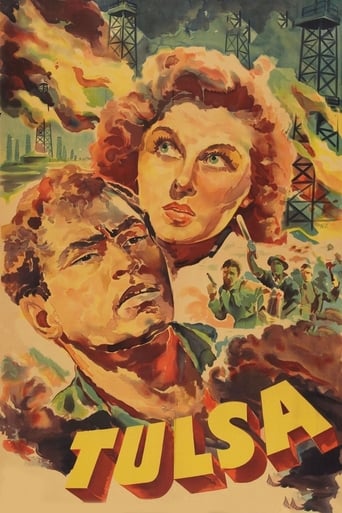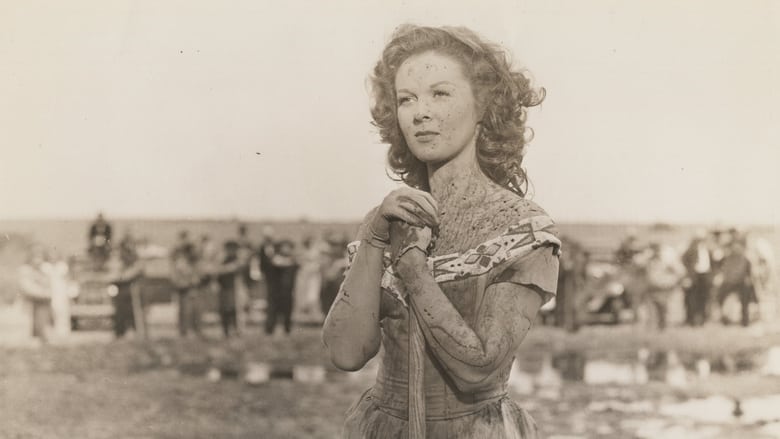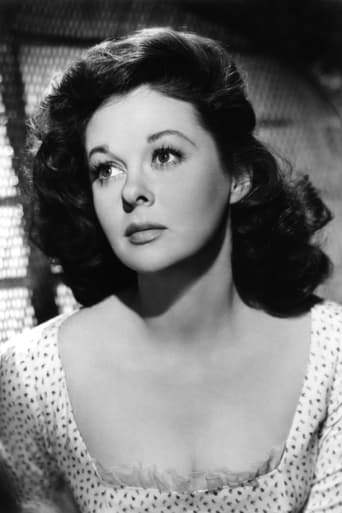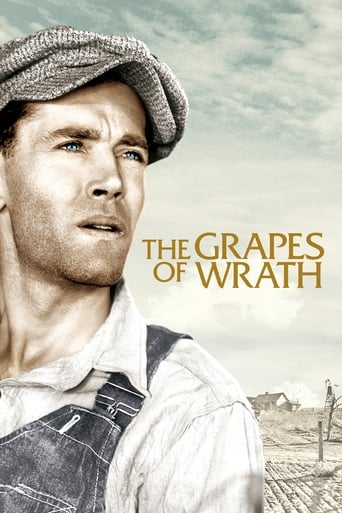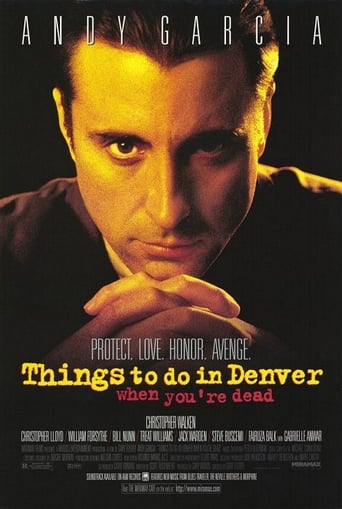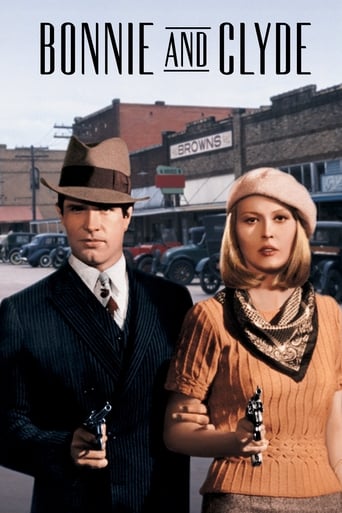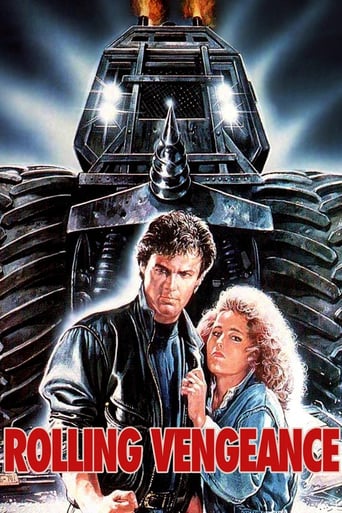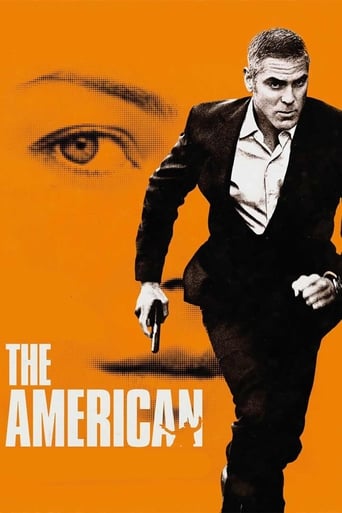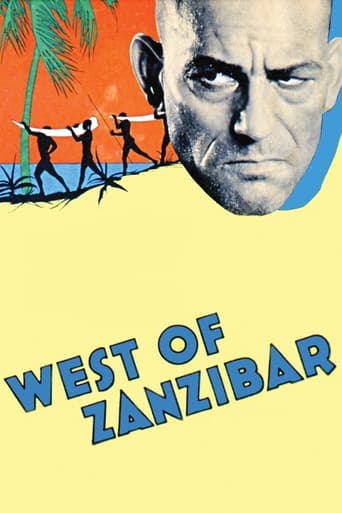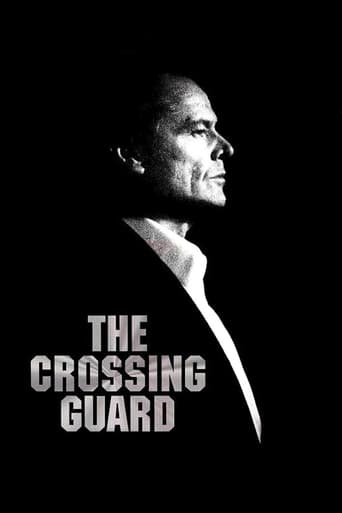Tulsa (1949)
It's Tulsa, Oklahoma at the start of the oil boom and Cherokee Lansing's rancher father is killed in a fight with the Tanner Oil Company. Cherokee plans revenge by bringing in her own wells with the help of oil expert Brad Brady and childhood friend Jim Redbird. When the oil and the money start gushing in, both Brad and Jim want to protect the land but Cherokee has different ideas. What started out as revenge for her father's death has turned into an obsession for wealth and power.
Watch Trailer
Cast


Similar titles
Reviews
So much average
Save your money for something good and enjoyable
Redundant and unnecessary.
Clever, believable, and super fun to watch. It totally has replay value.
Copyright 13 April 1949 (in notice: 1948) by Pathe Industries, Inc. Released through Eagle Lion Films, Inc. in the U.S.A.; General Film Distributors - Eagle Lion in the U.K.; British Empire Films in Australia. New York opening at the Capitol: 26 May 1949. U.S. release: 13 April 1949. U.K. release: 1 August 1949. Australian release: 15 December 1949. 8,191 feet. 91 minutes.SYNOPSIS: Get-rich-quick oil tycoons win out over a lone conservation-minded cattleman in 1920s Oklahoma.NOTES: Eagle Lion's most expensive production was also its biggest box-office success, although by and large contemporary critics were not enthusiastic. Tulsa was nominated for an Academy Award for Best Special Effects, but in a two-picture poll came second to Mighty Joe Young.COMMENT: After a most unpromising start (Chill Wills ogling into the camera and giving us an earful of reach-me-down guff about oil and Tulsa and the great state of Oklahoma), this film picks up considerably as soon as the story starts. In fact, Tulsa is one of director Heisler's most entertaining features - and one of the few pictures in which his early training as a film editor is obviously evident. (Such scenes as the camera closing in on the Tanner sign with Hayward's face superimposed, followed by the long tracking shot as she makes her way through the hotel lobby, are most effectively contrived.)Susan Hayward never looked more attractive. Great care has been taken with her make-up and costumes, and even more importantly she has been glamorously lit and photographed from most flattering angles. What's more she has a typical Hayward role which she plays with her usual relish and drive. Producer Wanger has surrounded his star with a competent array of support players. Armendariz is a little uncomfortable as "a crazy Indian", but Lloyd Gough is delightfully smooth as the chief villain and Ed Begley has an expressive cameo as a partying tycoon. Robert Preston plays the ruggedly honest hero with his usual ease and some of our favorite character players including Jimmy Conlin as Begley's reluctant attorney ("Never go anywhere without him!") are delightfully on hand. Not only does the story move at a rapid pace and allow plenty of opportunities for conflict and drama (including a spectacularly fiery climax which was deservedly nominated for an Academy Award), but it is now very topically angled. Tulsa may well be the very first Hollywood feature primarily motivated by Pollution versus Conservation. The script's arguments are just as valid today as in 1948. What's more they are crisply presented in terms of human conflict, rather than the dry lessons of academics and pedants.By Eagle Lion standards, production values are extraordinarily lavish. Hoch's glamorous photography has already been commended, and this praise has to be extended to the sets and miniatures, the costumes and effects. And we're not complaining that Chill Wills sings the pat-on-the-back title song twice - he does it each time with such agreeable good humor.All in all, a most entertaining 90 minutes.
Producer Walter Wanger and director Stuart Heisler shared a Special Effects Academy Award nomination for the action in this average (Technicolor) romance drama set in 1920's Oklahoma. It begins like an advertisement for the titled city and the oil business but ends by making a case for land conservation.Lovely Susan Hayward plays Cherokee Lansing, the daughter of a rancher that was accidentally killed by oilmen such that she ambitiously pursues revenge on the responsible party, Bruce Tanner (Lloyd Gough), with help from Native American Jim Redbird (Pedro Armendáriz) and Brad Brady (Robert Preston), the son of an "oil- catter" (Ed Begley) who'd left his leases to her.All three men are romantically interested in Cherokee. Chill Wills narrates and plays a colorful character named Pinky Jimpson, a blood cousin of Cherokee that calls everyone else "cousin" as a term of endearment. Jimmy Conlin appears briefly as the wildcatter's accountant Homer Triplette.Brad is the engineer that helps Cherokee strike oil on Jim's land in the nick of time (e.g. before Tanner forecloses on her) but is then driven by her newfound wealth and greed such that she and Bruce become partners. Distraught with the reality that his land will soon become unfit for ranching per all the oil derricks to be built there, Jim starts a fire that quickly spreads and consumes much of the Lansing-Tanner oilfields before all the primary characters work together to stop it.The raging fires and explosions to create the necessary fire line contributed to the Oscar nominated effects. Selmer Jackson is among those who appear uncredited.
One reviewer posted: "nicest bit of the film was the conservation angle about too much oil in boom times ruins the land for the future when they dry up." What a hoot! Evidently, this posted has mistaken the "conservative" and the "liberal" perspectives, and that certainly makes the poster a conservative. In reality, it's a liberal view not to waste natural resources - correct during the 20's time-frame of the film; true during the 40s, when the film was produced - and it is true today. The conservative perspective is to "take the money and run", that is: it's a flee market. Throughout the film, greedy conservatives are willing to destroy the environment, in order to maximize their profits. The liberals lobby for restraint and governmental regulation, to prevent the destruction of the environment. From a scientific perspective, the film is inaccurate. Specifically, uncompressed oil does not explode. Regardless, that mistake does not detract from the power of the film.
It's perhaps ironic that I chose to watch this film on the day it was announced that Larry Hagman died, the iconic J.R. Ewing of TV 'Dallas' fame who became the poster child for greedy oil barons everywhere. I'm curious why this film doesn't have more reviews, as most folks writing about it express their surprise at how intriguing the story line is. It's not like the movie is hard to find, it has a ubiquitous presence in bargain bins and large film compilations to make it quite readily available.Susan Hayward is the dominant force in the story, daughter of a cattle baron who alternates loyalties as the picture progresses between cattle ranchers and those leading the charge in the fledgling oil industry. The character who surprised me the most was old Charlie Lightfoot (Chief Yowlachie) who quickly abandoned his native culture's pride in the land to capitalize on a quick buck. Robert Preston, Pedro Armendariz and Lloyd Gough are all effective as on again/off again business allies and rivals, as well as competitors for Cherokee Lansing's (Hayward) affections.From today's standpoint, it's interesting to examine the mindset that once existed regarding oil as a finite resource subject to running out at a particular point in time. Modern day discoveries and new technologies are set to insure that our country's vast untapped resources will soon make us the new Saudi Arabia in both oil and natural gas production with hundreds of years of supply at current usage rates. Plenty of time to develop alternative energy resources if left to private enterprise entrepreneurs instead of the government picking winners and losers, or as is mostly the case - losers.

